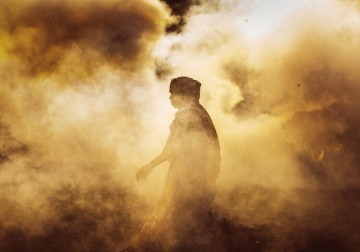In a new study from LVPEI, Dr. Padmaja Kumari Rani and her team evaluate the environmental and economic impact of teleophthalmology from patients visiting LVPEI’s primary and tertiary centers.
Telemedicine addresses a crucial lacuna in health care service delivery: access. Using the internet, telemedicine enables the remote diagnosis and treatment of ailments in people who are unable to visit a hospital due to vast distances or the cost of travel. Teleophthalmology, telemedicine adapted for eye care, connects a patient with an ophthalmologist using a smartphone app to book an appointment, have an online consultation, and download an e-prescription. Alternatively, the patient can visit a primary eye care center, where a technician performs the eye examination and uploads the report to a server. Several kilometers away, an ophthalmologist will review the report and either prescribe treatment or refer the patient to a hospital for further diagnosis. In India, where 70% of the population lives in rural areas, teleconsultations can improve eye care access.
Deploying telemedicine can have economic and environmental benefits. Patients, especially from rural areas, need not travel long distances to urban hospitals. CO2 emissions from vehicular travel adds to India’s carbon footprint. In addition to travel expenses, the patient also bears indirect costs like food, lodging, and lost wages. Studies in high-income nations, and a few in India, have shown that telemedicine is economical and environment friendly. However, no such study has been done to analyze the impact of teleophthalmology, especially in India. LVPEI, with its extensive eye care network, is uniquely positioned to assess teleophthalmology’s impact.
In a new, prospective study published in the journal Eye, Dr. Padmaja Kumari Rani and others from LVPEI evaluated the environmental and economic impact of teleophthalmology. The study included 324 patients—173 from rural primary eye centers and 151 from urban tertiary hospitals—who received teleconsultations from LVPEI within a three-month period. Patients at rural centers were sorted into ‘green,’ ‘yellow,’ and ‘red’ codes based on medical emergency and condition severity. Most primary center patients (68%) were ‘green’, i.e., their condition could be treated via teleconsultation alone. The remaining 32% were referred to a hospital. Their CO2 emission and expenses (travel, food, and lost wages) were used to calculate the emissions/costs deferred by the ‘green’ tags. Patients at tertiary hospitals were classified as ‘new’ or ‘follow-up.’ Carbon emissions from their transportation and costs incurred were recorded.
Each primary center patient, on average, saved 80 km of travel and deferred 2.89 kg of CO2 emission from teleconsultation. Roughly 1.26 liters of fuel was saved per rural patient over three months. Meanwhile, each patient who chose teleconsultation over traveling to a tertiary center saved an average of 1,666 km of travel and deferred CO2 emission by 176.6 kg over three months. That amounts to 75.9 liters of fuel saved. The cost savings were equally impressive. On average, each rural patient saved INR 370, whereas each urban patient saved INR 8,339 on travel expenses alone. Factoring in indirect costs like food and lost wages, total saving among rural patients was INR 29,100, while urban patients saved INR 3,47,800.
‘The climate crisis is no longer a conference topic; we are in the climate crisis,’ remarks Dr. Padmaja Kumari Rani, Network Head of Teleophthalmology at LVPEI and the corresponding author of this paper. ‘Every healthcare system should work towards carbon neutrality. Teleophthalmology is an efficient and effective tool that can help the eye care industry achieve that goal.’
Citation
Rani, P. K., Khanna, R. C., Ravindrane, R., Yeleswarapu, S. C., Panaganti, A. K., Thakur, V. S., Sharadi, V., Iype, V., Rathi, V. M., & Vaddavalli, P. K. (2024). Teleophthalmology at a primary and tertiary eye care network from India: environmental and economic impact. Eye (London, England), 10.1038/s41433-024-02934-4. Advance online publication. https://doi.org/10.1038/s41433-024-02934-4
Photo credit: ‘The world of smoke’; by Sujan Sarkar, WSD Photo competition 2021.



